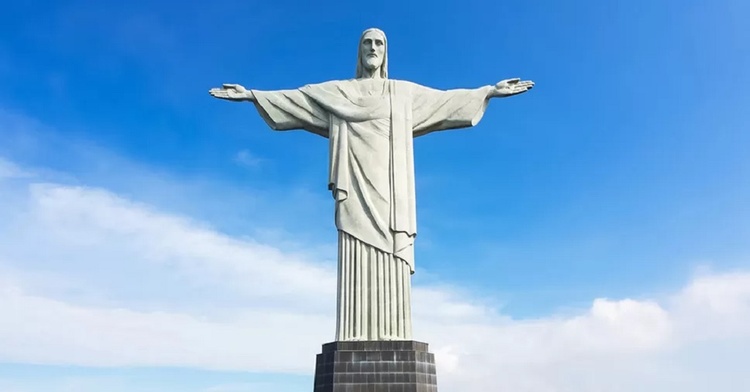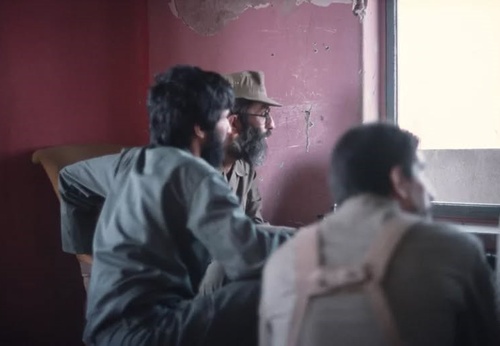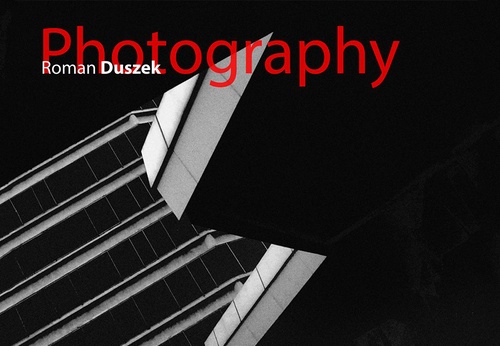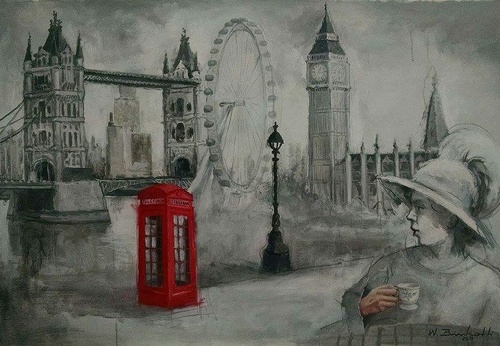
10 most beautiful statues and sculptures in the world
Made of marble, copper, bronze and even earth, some statues and sculptures are symbols of art that have become postcards. We selected the 10 most beautiful and impressive in the world
by Bruno Segadilha | Shutterstock photos and Disclosure/Ministry of Tourism of Uruguay
Christ the Redeemer
Rio de janeiro Brazil

It all started in 1859, when the French priest Pierre-Marie Boss, from the Church of the Colégio Imaculada Conceição, had the idea of building a religious monument at the top of Mount Corcovado, in Rio de Janeiro. The project, considered daring, was shelved for a few years, until, in 1922, the government of then President Epitácio Pessoa decided to materialize it in celebration of the centenary of Brazil's Independence. Created by designer Heitor da Silva Costa, painter Carlos Oswald and sculptor Maximiliam Paul Landowsky, the statue of Christ the Redeemer was inaugurated on October 12, 1931. Its numbers are impressive.
The monument is 38 meters high, the equivalent of a 13-story building, cost around R$9.5 million and was made of soapstone cut into thousands of triangles. They were glued by hand onto fabric and then applied to the statue by pastille artists.
The Thinker
Paris, France

In 1880, Frenchman Auguste Rodin, father of modern sculpture, was invited to create a piece for the Museum of Decorative Art in Paris based on The Divine Comedy, by Dante Alighieri. From this commission came the work A Porta do Inferno, a large portal with 180 bronze figures, including the famous man who rests his chin on one of his fists. The character in question portrayed the Italian poet and, despite being initially named The Poet, the piece became known to visitors who passed through the museum entrance as The Thinker. The sculpture gained other versions made by the artist himself, including the most famous, which is 1.86 meters high and is on display at the Musée Rodin, in Paris. In Brazil, the sculpture can be seen at the Instituto Ricardo Brennand, in Pernambuco, where there is a version that was made using the original mold.
Terracotta Army
Xian Province // China

One of the main relics of history was discovered by chance. In 1974 Chinese farmers were excavating a dry area in Xian province to build wells, when they found stone statues. The figures were part of a collection of more than 8 thousand figures of warriors, another 520 horses and 130 carriages, handcrafted in life size. Each piece was unique and the soldiers carried real bronze weapons. The army is located about a kilometer and a half from the mausoleum of Emperor Qin Shihuangdi (260-210 BC), built so that he would have all the power and wealth he enjoyed in life in death. According to historian Sima Qian, whose records are the main source of information about the construction, more than 700,000 people from all corners of the country worked on the works, which took 38 years to complete.
Greetingman
Montevideo // Uruguay
In October 2012, the Buceo neighborhood in Montevideo received what would be the first in a series of sculptures made by South Korea to seal peace and friendship with other countries. The capital of Uruguay was not chosen randomly. The city is an antipode of Korea, an area of the Earth located diametrically opposite. The statue, created by Korean artist Yoo Young-ho, is six meters high and displays a figure curved downwards, showing a reverence typical of Asian people. It is a naked man who represents all men, not a specific type or race, and is painted light blue because, according to the sculptor, this is the color of joy and light. The project cost 200 thousand dollars and was financed with the sale of 800 similar sculptures, but made on a smaller scale.
Pieta
Vatican // Italy

In November 1497, French Cardinal Jean Bilhères de Lagraulas commissioned Michelangelo Buonarroti to create a sculpture of the Pietá for his tomb. Common in sculptures in regions of France, Germany and Central Europe, the Pietà is the theme that refers to the dead Christ, whose body was laid on his mother's lap. To materialize his desire, the religious man provided the immense block of marble that gave rise to the 1.95 meter tall statue. Bilhères died before seeing his commission, which took a year to be sculpted, completed. The monument only went to the chapel of Santa Petronilla, next to the southern arm of the old Saint Peter's Basilica, where the cardinal was buried, a few months later. Twenty years later, the sculpture moved to another part of the temple. It remained in the sacristy for a period and then moved to its current location, to the right of the Basilica, next to the entrance.
Bust of Nefertiti
Berlin, Germany

In 1912, at the time of European expeditions in the Middle East, when the team of German archaeologists led by Ludwig Borchardt found an Egyptian site that became known as Atelier Tutmés. There, they discovered the bust of Nefertiti, one of the most symbolic artifacts of Ancient Egypt. The object was taken to Germany and passed through different institutions, until arriving at the Neues Museum, where it is currently located. Made of limestone, the sculpture is around 3,400 years old and represents the Egyptian queen who was the wife of Pharaoh Akhenaten. Its authorship is not exactly known, but it is believed to be the work of the sculptor Thutmose and to have been produced around 1345 BC. A cultural symbol of the German capital, as well as Ancient Egypt, the statue is the subject of an intense historical discussion between the two countries, since, since the 1920s, Egyptian authorities have been demanding their return.
Statue of Liberty
New York // United States

One of the main symbols of the United States, the statue was a gift given by France to commemorate the alliance between the countries during the Revolutionary War. The 45-meter-high monument represents Libertas, the Roman goddess of freedom, who holds a torch in her right hand and the United States Declaration of Independence in her left. The famous postcard was built piece by piece over the course of nine years and its parts were exposed in Paris as they were completed, like the head and the torch, which remained for some time in the Jardins du Trocadéro. The work was completed in 1885, when it was sent to New York, and inaugurated on October 28, 1886, on Liberty Island, after months of assembly. Made of copper, it had a different appearance. The green color took 20 years to catch on, in a process called vert-de-gris patina.
Fernando Pessoa
Lisbon, Portugal

One of the most traditional cafes in Lisbon, A Brasileira was opened in 1905, in the Chiado neighborhood, and is part of the city's history. It was there that the poet Fernando Pessoa liked to spend a few hours of his day, savoring the drink, passing time and, often, composing his work. To honor the writer on his centenary, celebrated in 1988, the owners of the place unveiled a bronze statue of him sitting in one of his favorite spots. Author of the work, Portuguese artist Lagoa Henriques said that his inspiration came from chance. He had picked up the book Obras de Fernando Pessoa and opened it at random, coming across a poem whose first verse was “The hand placed on the table”. At that moment he considered that he had just received a message from Pessoa and decided to portray the author sitting, with his arm on the table.
Mom
Ottawa // Canada

Over a career spanning almost seven decades, French artist Louise Bourgeois became famous for her beautiful sculptures, including the imposing Maman, created for the opening of Tate Modern in London in 2000. The enormous spider is part of a series inspired by arachnid that has gained versions in different parts of the world, such as the one in the National Gallery of Canada, in Ottawa. The more than nine meter tall work stands on legs that resemble Gothic arches and functions as a cage and lair to protect the eggs that are attached to its abdomen. The animal, which first appeared in drawings made by the artist in the 1940s and gained prominence in her work during the 1990s, is a tribute by Bourgeois to her mother, who was a weaver. The work, opened in 1999, reveals the ambiguity of maternal love, which, according to her, preys and protects. The superlative size also has a double function: to provoke fear and compassion since, according to the artist, the enormous being shows vulnerability when trying to balance on its paws.
David, by Michelangelo
Florence // Italy
Commissioned by the Catholic Church as part of a series of figures of prophets and biblical characters, the statue is one of Michelangelo's main works. Hero of the Old Testament, David had defeated, with courage and dexterity, the giant Goliath, freeing the people from the threat of Philistine soldiers. The sculpture, inaugurated in 1504, was created to decorate the entrance to the cathedral of Santa Maria del Fiore, in Florence, but ended up positioned in front of the Palazzo della Signoria, the seat of government at the time, and is now inside the Galleria dell' Academy. The work, a symbol of the Renaissance, is 5.17 meters high and impresses with its wealth of details, such as the marked muscles and even veins on the arms and hands. With this work Michelangelo showed his mastery in anatomical representation and assumed the total nude, something that, for the artist, was fundamental, since the body represented God's masterpiece.



- July 04, 2025
Photography as a Tool for Telling History

- July 04, 2025
Palette Graphique Birdies and Flowers | Linda Wood

- July 03, 2025
Mexican Inspirations in the Art of Linda Wood


- July 03, 2025
Roman Duszek | Photography


- July 03, 2025
Gallery Of Illustration By Walmir Binhotti - Brazil

- July 04, 2025
Graphic Design and Creating Iconic Bran…

- July 04, 2025
Photography as a Tool for Telling Histo…

- July 03, 2025
Painting and abstract art: differences …

- July 02, 2025
The Best Software for Digital Art and G…

- July 01, 2025
How Digital Artists Collaborate with Ar…

- July 01, 2025
Reflections of Digital Art in Different…

- June 30, 2025
Crítica de Obras Artísticas Criadas por…

- June 30, 2025
What are Plastic Arts?

- June 30, 2025
Images Against Silence: Artists Who Cha…

- June 29, 2025
History of Art Photography in the 20th …

- June 28, 2025
The 11 types of art and their meanings

- June 28, 2025
Contemporary Art is postmodern art

- June 26, 2025
Graphic Design, Art, and Technology: Wh…

- June 25, 2025
Graphic Design and Modern Content Creat…

- June 25, 2025
Art as a Manifestation of Resistance

- June 24, 2025
Latin American Art in the world

- June 24, 2025
Painting as a form of emotional express…

- June 23, 2025
14 questions and answers about the art …

- June 23, 2025
9 Latino painters and their great contr…

- June 22, 2025
The most famous image of Ernesto "Che" …

- August 29, 2023
The history of Bolivian art

- February 19, 2024
Analysis and meaning of Van Gogh's Star…

- January 28, 2024
Culture and Art in Argentina

- September 25, 2023
What is the importance of art in human …

- September 23, 2023
What is paint?

- August 10, 2023
14 questions and answers about the art …

- August 30, 2023
First artistic manifestations

- August 23, 2023
The 11 types of art and their meanings

- January 12, 2024
10 most beautiful statues and sculpture…

- September 23, 2023
Painting characteristics

- September 23, 2023
History of painting

- April 06, 2024
History of visual arts in Ecuador

- August 16, 2023
The 15 greatest painters in art history

- March 26, 2024
The importance of technology in art1

- January 31, 2024
Examples of Street Art – Urban Art

- April 07, 2024
Graffiti in Latin American culture

- January 20, 2024
What is the relationship between art an…

- March 26, 2024
Cultural identity and its impact on art…

- October 21, 2023
Contemporary art after the Second World…

- August 25, 2024
A Comprehensive Analysis of the Cartoon…

- February 19, 2024
Analysis and meaning of Van Gogh's Star…

- August 13, 2023
9 Latino painters and their great contr…

- August 10, 2023
14 questions and answers about the art …

- August 29, 2023
The history of Bolivian art

- January 28, 2024
Culture and Art in Argentina

- August 23, 2023
The 11 types of art and their meanings

- November 06, 2023
5 Latin American artists and their works

- August 27, 2023
15 main works of Van Gogh

- September 23, 2023
Painting characteristics

- September 23, 2023
What is paint?

- September 25, 2023
What is the importance of art in human …

- December 18, 2023
10 iconic works by Oscar Niemeyer, geni…

- August 30, 2023
First artistic manifestations

- January 20, 2024
What is the relationship between art an…

- March 26, 2024
Cultural identity and its impact on art…

- January 12, 2024
10 most beautiful statues and sculpture…

- October 30, 2023
Characteristics of Contemporary Art

- August 22, 2023
What are Plastic Arts?

- April 16, 2024
The most important painters of Latin Am…

- August 24, 2023


